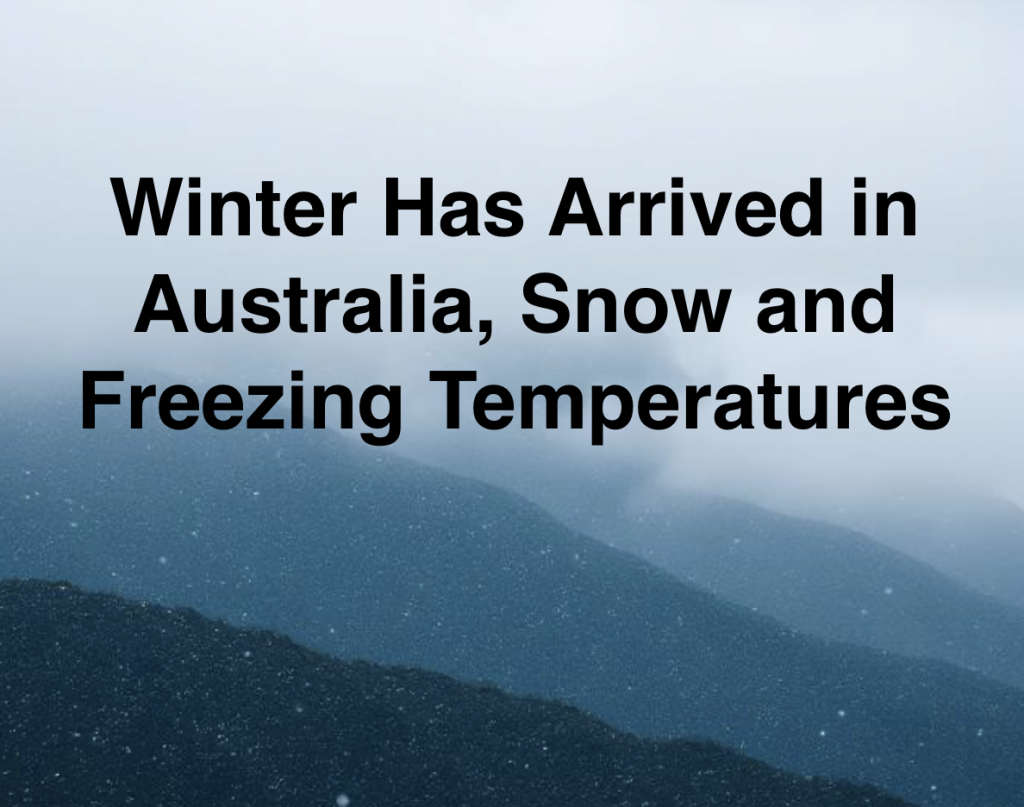
As the Northern Hemisphere begins to enjoy the fruits of summer, the Southern Hemisphere falls into the depths of winter. Southeast Australia has been gripped by a severe polar blast since June 4th, with frigid air plunging daytime highs several degrees below typical early June values. On June 4th, Sydney saw its maximum struggle to reach 14 °C—more than 6 °C below the long‐term June average of about 20 °C—making it the city’s coldest day of 2025 so far. Meanwhile, in Brisbane, June 5th brought early‐morning lows of just 11–12 °C in some southern suburbs, about 5 °C below the June norm of roughly 17 °C, marking the coldest morning of the year for Queensland’s capital. In the country town of Goulburn, temperatures plunged to −7 °C on June 5th, well below the June average low of around 2 °C, leading to widespread frost and icy road conditions. Regional centres such as Nowra and Wollongong also saw daytime highs at least 8 °C below normal. (9news.com.au)

Record lows were reported across several highland and inland locations. In Canberra, June 5th’s pre‐dawn temperature fell to −4 °C—roughly 8 °C below its typical early June minimum of 4 °C—making it the city’s coldest morning since July 2024. Goulburn’s −7 °C on June 5th was also its lowest reading since winter 2024, with local meteorologists noting it as among the coldest starts to June in more than a decade and among its most severe late‐autumn frosts on record. Further north, Armidale recorded a minimum of −5 °C on June 5th, about 10 °C below its usual June low of 5 °C. On the coast, Sydney’s morning low of 8 °C on June 5th was approximately 7 °C below its average of 15 °C for early June. (news.com.au)
Snowfall began to blanket higher alpine areas on June 4th, with a light dusting reported at Mount Buller and Thredbo. Although accumulations were modest—around 2–3 cm—it marked the first June snow in the Victorian Alps since 2022. Alpine resort operators noted that overnight temperatures hovered around −2 °C at 1,500 m, nearly 7 °C below the typical early June lows for that elevation, setting the stage for heavier falls over the weekend. On June 5th, a cold front produced a further 10–15 cm of snow above 1,200 m in the Upper Snowy region, with hints of flurries down to 800 m in the Blue Mountains. Meanwhile, coastal catchments received only light rain, with Sydney’s Observatory Hill measuring 5 mm over 48 hours (June 4–5)—not enough to offset the deepening cold but delivering minor relief to lingering drought conditions. (abc.net.au, news.com.au)
Within the past two days, several eastern‐seaboard cities logged their coldest readings since winter 2024. Sydney’s high on June 4th of 14 °C was its lowest maximum since August 2024, and Brisbane’s 11 °C morning on June 5th was the coldest in the city since July 2024. Adelaide recorded a maximum of 13 °C on June 6th—its coldest day since July 2024—while Melbourne’s 12 °C on June 5 was the chilliest since September 2024. Canberra’s −4 °C on June 5 marked its coldest start to June since July 2024. Collectively, these data underscore how Eastern Australia has swung rapidly from unseasonably mild autumn conditions into a polar outbreak that has grounded the region with record‐setting cold and the first significant snowfalls of the ski season. (abc.net.au, 9news.com.au)
Prior to this polar blast, Eastern Australia had experienced one of the warmest autumns on record. Nationwide, March–May 2025 temperatures averaged 1.41 °C above the 1961–1990 norm, with multiple states logging their warmest or near‐warmest autumns ever recorded. Victorian minimums in March were 2.3 °C above average, extending summer into mid‐March by roughly 30 days compared to seven decades ago. Brisbane likewise saw record rainfall paired with unusually warm conditions, and Adelaide endured one of its driest, warmest Mays since 2005. This stark contrast between a prolonged warm autumn and the sudden plunge into winter‐level cold in early June highlights the growing volatility of Australia’s climate, where pronounced swings between extremes are now more commonplace. (theguardian.com, heraldsun.com.au)



























